SMART on FHIR: Re-imagine Healthcare Data Exchange
Updated: June 4, 2025
Are you seeking an integrative, secure, standardized method to enhance healthcare interoperability? Or do you want your health application to seamlessly interact with electronic health records (EHRs) to deliver improved patient outcomes? If so, your journey to understanding the intersection of healthcare and technology begins with two crucial acronyms: FHIR and SMART.
FHIR, or Fast Healthcare Interoperability Resources, is redefining the healthcare industry by providing a universal framework for exchanging, integrating, sharing, and retrieving electronic health information. However, as evolutionary as FHIR is, it becomes even more powerful when combined with SMART, Substitutable Medical Applications, and Reusable Technologies. This is where the journey becomes particularly exciting.

We provide companies with senior tech talent and product development expertise to build world-class software. Let's talk about how we can help you.
Contact usWe invite you to check out this article, describing the purpose and usefulness of SMART on FHIR and analyzing the features that make it a remarkable health technology tool. So, whether you’re a healthcare professional, a health-tech enthusiast, or simply a curious reader, we guarantee an informative reading ahead.
Table of Contents
Understanding FHIR: Brief Outline
So, what is Smart on FHIR? (FHIR), pronounced “fire,” is a next-generation standard-based framework made by Health Level Seven International (HL7). The FHIR protocol has been designed to facilitate health data interoperability, aiming to tackle the global challenge of healthcare data fragmentation. FHIR achieves this by using a set of standardized “resources” or data types that can be used in different contexts, allowing separate systems to understand and process the same information seamlessly.
FHIR’s differentiating factor lies in its versatility and adaptability, harnessing the power of modern web technologies like RESTful APIs, XML, and JSON for seamless data exchange and integration. Thus, in a field where data exchange can be quite challenging, FHIR introduces a significant degree of simplicity and consistency.
Compared to HL7, FHIR supports a broader array of information formats, seamlessly integrates with mobile SaaS solutions, and interacts more efficiently with wearables and medical devices. FHIR’s prowess extends to fostering data exchange among diverse systems such as patient administration, practice management, laboratory information, dietary, pharmaceutical, payment systems, and electronic records, offering a truly holistic solution.
It also supports the Clinical Document Architecture (CDA), an XML-based standard for encoding and structuring clinical documents, and Arden Syntax, a language promoting the exchange of medical knowledge, thus facilitating informed treatment decisions.
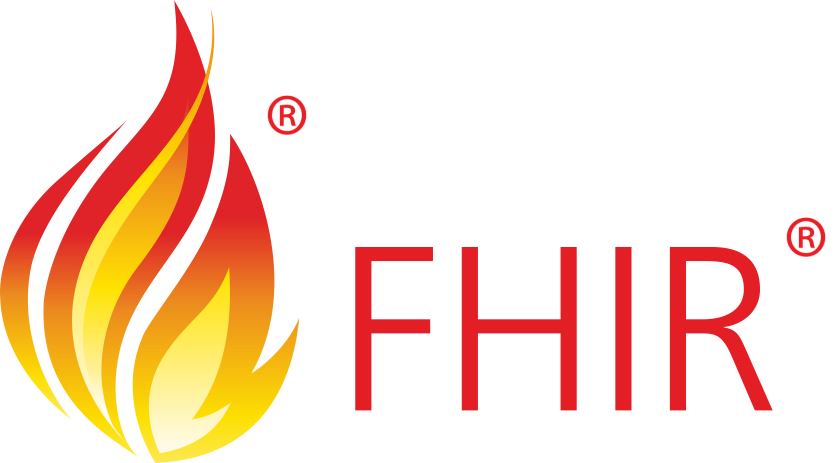
Source: Rosenfieldhealth
What is SMART?
In fact, Substitutable Medical Applications, Reusable Technologies (SMART) furthers FHIR’s capabilities. While FHIR provides a robust data exchange framework, SMART introduces an application layer to allow health applications to run across different healthcare systems.
The primary goal of SMART is to enable an ecosystem of innovative healthcare applications that can be easily plugged into any compliant EHR, much like how apps can be installed on a smartphone. Essentially, SMART allows healthcare professionals to tailor their EHR systems to their unique needs and workflows using a variety of applications, thereby promoting flexibility and efficiency in healthcare settings.
The SMART on FHIR protocol operates on the following key principles:
- Establishing the format for information exchange via the SMART API.
- Utilizing CDS Hooks that enable third-party applications to request data from the healthcare system.
- Employing data profiles that dictate the type of patient information that can be acquired through FHIR and its format.
- Harnessing the FHIR Bulk Data API, which transitions the format from individual records to vast quantities of data.
- Implementing the SMART App Launcher interface to synchronize applications with EHRs and healthcare providers.
- Leveraging SMART Backend Services, a system dedicated to handling formats and standards and setting the logic for data exchange.
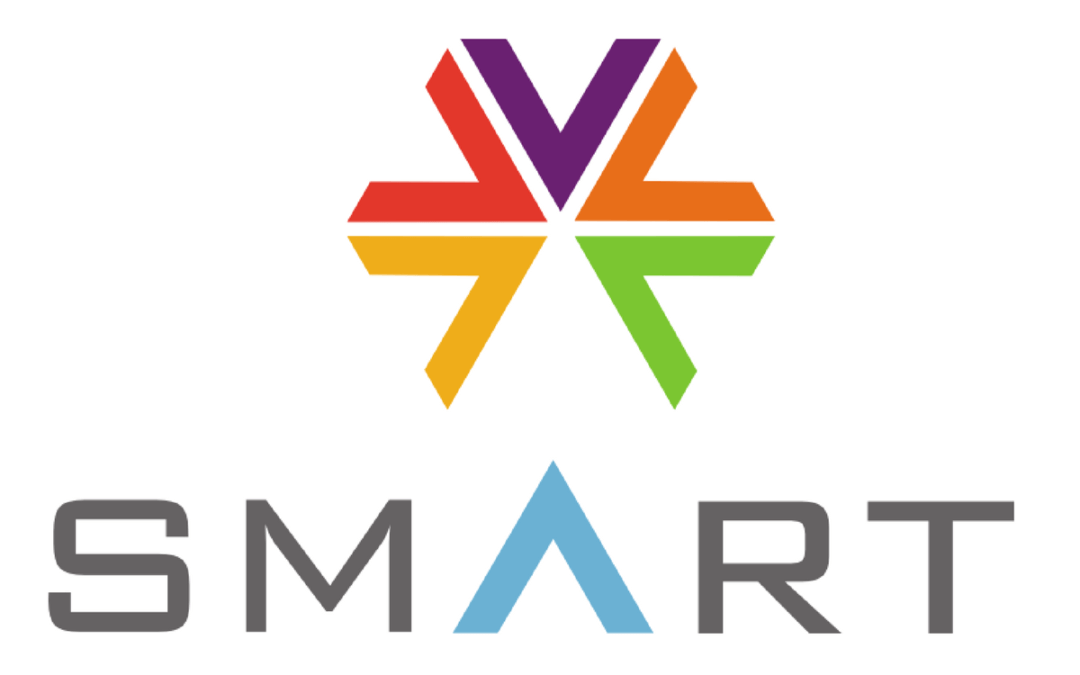
Source: Forbes
How SMART on FHIR Works
SMART on FHIR operates on the core principles of integration, interoperability, and security, significantly enhancing the functioning of healthcare IT systems. Let us delve into the core of this pioneering system.
In a nutshell, SMART on FHIR is a fusion of the robust FHIR standard, standardizing electronic healthcare information exchange, and SMART that adds a versatile layer of user-focused apps to healthcare systems. This blend is geared towards fostering a healthcare ecosystem where apps can be effortlessly and securely integrated, swapped, and reused across various healthcare systems, thereby enhancing interoperability.
SMART on FHIR sets out a system of “scopes and launch contexts,” orchestrating the exchange of information between apps and healthcare systems. The system outlines what data an app can access and when. The SMART App Launcher is a critical piece of this puzzle, which syncs apps with Electronic Health Records (EHRs) and healthcare providers. Once given the green light, a SMART on FHIR app can tap into relevant patient data from an EHR system to perform its function, whether data analysis, decision support, or patient education.
A cornerstone of the SMART on FHIR system is its embrace of the OAuth 2.0 open authorization framework for safeguarding data access and OpenID Connect for user authentication. These ensure that only approved apps can access patient data, and users are verified before accessing these apps, hence preserving data security and patient confidentiality.
SMART on FHIR simplifies the development of applications by offering clear-cut guidelines but also ensures these applications can securely liaise with a range of EHR systems. The upshot is a shift towards a more linked-up, streamlined, and patient-oriented healthcare system.
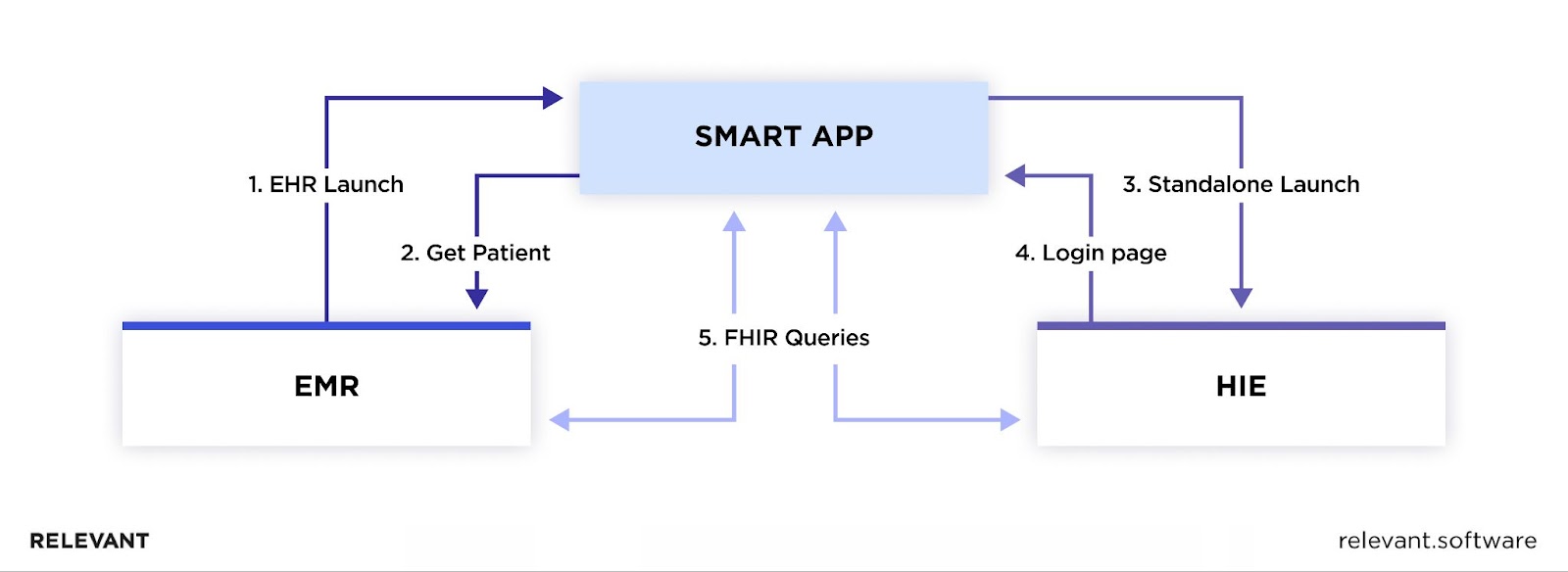
Key Features of SMART
SMART is a transformative platform enhancing healthcare applications’ functionality and user experience. It forges an environment where apps can effortlessly integrate into any compatible healthcare system, heightening efficiency, security, and customization in healthcare delivery.
- Standardized Interface: At its heart, SMART has a standardized interface that permits healthcare applications to be “substitutable” – able to be added or removed without causing system-wide disruptions. This plug-and-play method drives healthcare innovation by empowering professionals to tailor their systems to many applications.
- EHR Integration: One of SMART’s significant strengths is its smooth integration with Electronic Health Records (EHRs). It enables healthcare providers to directly employ specialized tools within their existing workflows, boosting efficiency and reducing the hassle of alternating between systems.
- FHIR Compatibility: SMART’s compatibility with Fast Healthcare Interoperability Resources (FHIR) guarantees access to standardized clinical data, extending its interoperability and facilitating flawless operation across varied healthcare environments, covering diverse scenarios.
- User Authentication: SMART also offers a secure framework for user authentication, endorsing various authentication mechanisms, including the industry-standard OAuth 2.0 protocol, to ensure aptly managed and secured access to health data.
- App Authorization: Appropriate app authorization is also ensured by SMART. In essence, an app can only access the data it needs and is permitted to view, offering granular control over data access, ensuring data security, and complying with patient privacy and data protection laws.
- Open Standards: Finally, SMART is founded on open standards, fostering innovation and compatibility across different platforms while minimizing vendor lock-in, assuring that healthcare providers can freely select the most suitable applications for their needs.
By unifying FHIR’s interoperability prowess with SMART’s app ecosystem, SMART on FHIR has emerged as a handy tool in the healthcare IT revolution, offering safer, more efficient care through superior data accessibility and usage.
Use Cases and Applications of SMART on FHIR
Indeed, SMART on FHIR has significantly expanded the boundaries of health IT, driving innovative solutions that streamline healthcare processes and improve patient care. The versatility of SMART on FHIR is evident in its varied use cases and applications:
- Clinical Decision Support (CDS) Systems: Let’s consider a scenario where a clinician needs to make a critical decision at the point of care. By integrating CDS tools with SMART on FHIR, these systems can tap into real-time patient data from EHRs, offering evidence-based treatment recommendations. This immediate access to vital information paves the way for informed, timely decisions, ultimately enhancing patient outcomes.
- Personalized Medicine: Every patient presents a unique health scenario requiring customized treatment plans. SMART on FHIR steps up here by facilitating access to a patient’s complete medical history. With this wealth of data, clinicians can better understand the patient’s health profile and devise personalized therapeutic interventions.
- Patient Engagement Applications: SMART on FHIR enables the creation of interactive apps, empowering patients to access health records, monitor metrics, manage medications, and connect with healthcare providers. This fosters patients’ active involvement in their health journey.
- Population Health Management and Research: SMART on FHIR streamlines health data exchange, fueling population health management and research. It assists researchers and public health officials in compiling and scrutinizing health data from various sources, pinpointing health trends, patterns, and disparities across different populations.
- Telemedicine: With the booming need for remote care, telemedicine is the new normal. SMART on FHIR turbocharges telemedicine apps by feeding real-time, comprehensive patient data to clinicians during virtual consultations. This ensures data-driven decisions, even from a distance.
- Interoperability in Healthcare Systems: The crowning point of SMART on FHIR lies in its ability to enable interoperability in healthcare systems. Allowing diverse healthcare applications and systems to speak the same language and exchange information seamlessly eliminates data silos, and fosters coordinated, comprehensive care.
The SMART on FHIR Connected Care Experience
| Stage | Process |
| Wearables/IoT | Consumers share collected Apple Watch health data through Apple SMART on FHIR API protocol for healthcare practitioners. |
| Scheduling | Consumers schedule appointments with a watch or phone app. LoMT data is connected through FHIR smart to medical records and clinical systems. |
| Hospital Admission | Primary care physicians have patient ID data on hand. Demographic and coverage details are accurate and complete, delivered through a SMART app. |
| Diagnosis and Care Planning | SMART on FHIR pushes encounter data to provider and payer systems, ensuring a complete and accurate patient record. This guides clinical care plans. |
| Care Coordination | Doctors work from a link between the clinical, lab, scheduling, pharmacy, and admin systems. They ensure diagnosis and authorization for a swift, productive, exceptional patient stay. |
| Claims and Billing | SMART FHIR interfaces with costing, financial transactions, billing, eligibility, enrollment, claims, and payments. |
| Discharge and Post-Acute Care | Care managers have all the information they need to direct referrals and connect with patients to remotely manage and monitor post-acute care. |
Remember, these aren’t just cool tech advancements – they’re the building blocks of a more efficient and patient-centered healthcare system. With SMART on FHIR, we’re not just imagining a better future for healthcare; we’re creating it. Read about the process in our in-depth FHIR implementation guide here.
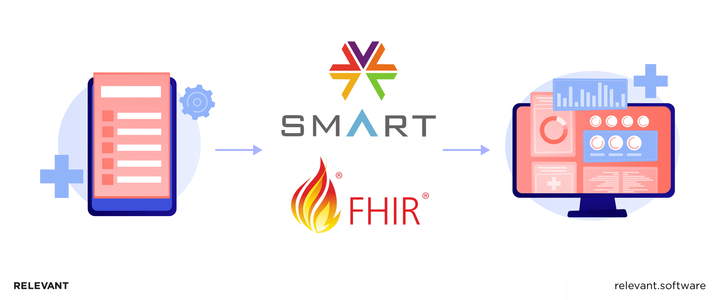
How to Develop a SMART on FHIR Application
Using RESTful APIs, developers leveraging SMART on FHIR must implement several industry standards per the outlined specifications. These standards encompass:
- OAuth: The OAuth2 protocol, an open-standard authentication method, allows users to secure login to third-party sites, safeguarding their sensitive information. OAuth2, when used in tandem with SMART on FHIR scopes, specifies and requests particular API permissions corresponding to the intended operations.
- OpenID: A decentralized and open standard authentication protocol enabling users to authenticate across multiple sites (relying parties) through a third-party service. It is commonly used to allow users to log into third-party websites without revealing their credentials.
SMART on FHIR technology offers two distinct variants to facilitate the integration of health apps with EHR systems:
- Standalone Applications: These are SMART on FHIR apps that launch independently from the EHR. They are ideal when you require a more flexible, independent application, not tied to any specific EHR system.
- Integrated Applications: These applications function directly within the EHR’s interface, whereas FHIR server provides seamless interoperability within the EHR ecosystem. However, to launch a health app from within an EHR system, the system must support the SMART on FHIR protocol.
With its comprehensive support for app development, SMART on FHIR API enables the creation of robust applications spanning various platforms, including iOS, iPadOS, WatchOS, and Android. It also supports integration with EHR vendors like Epic, Cerner, and Allscripts. Moreover, cloud service providers like Google and Microsoft offer SMART on FHIR-ready services, broadening the options for healthcare app developers and healthcare tech companies.
Steps to Build a SMART on FHIR App
Creating a SMART on the FHIR application involves multiple stages, from conceptualization to deployment. Here’s a breakdown of the process:
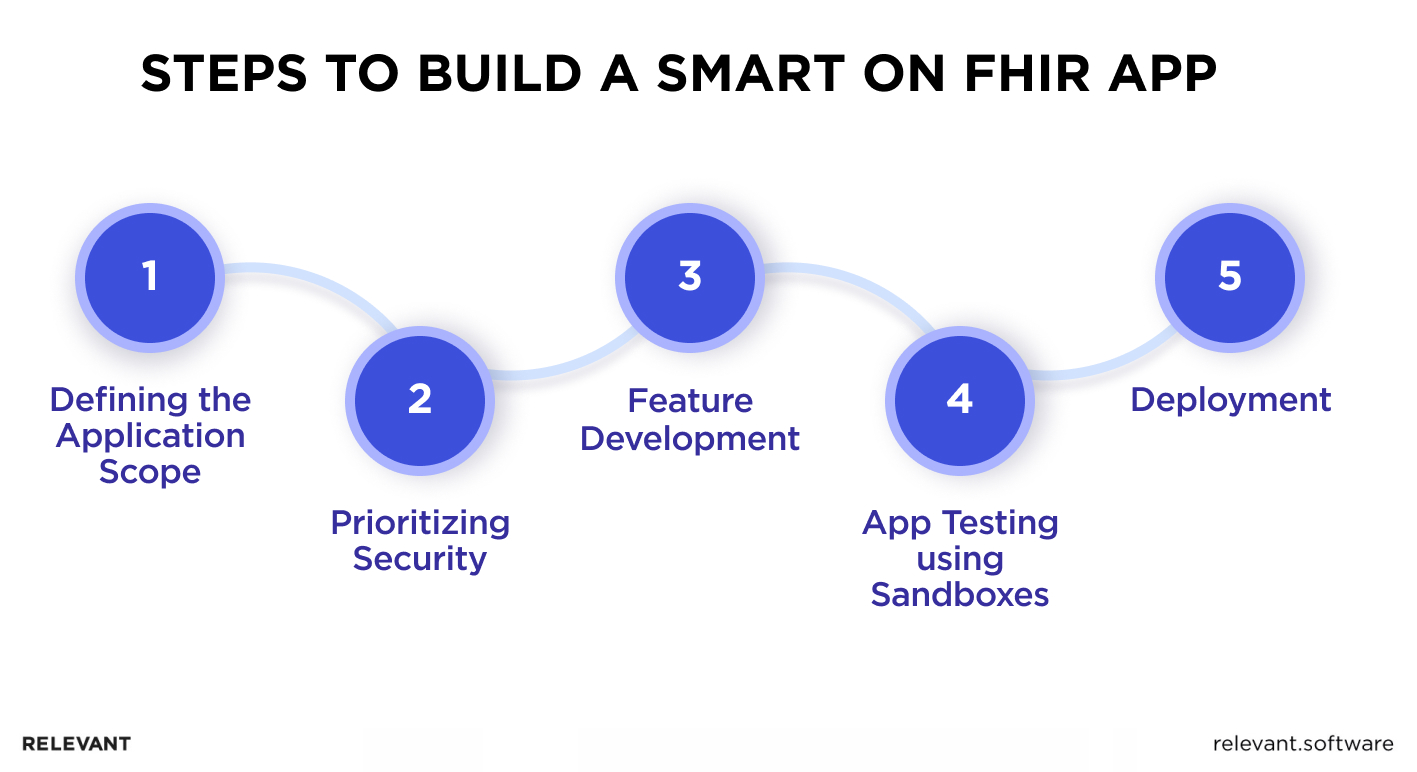
Step 1. Defining the Application Scope: At the outset, we determine the nature of your application. Given the versatility of SMART on FHIR, you have a broad spectrum of possibilities: be it web or mobile apps, those aimed at patients or providers, and either standalone or integrated web apps. Our experts utilize libraries in various languages, including Python, Swift, and JavaScript, to expedite core development, while SMART on FHIR handles interoperability. We also leverage environments specifically tailored for SMART on FHIR development in cloud technologies like Azure and Google Cloud to enhance efficiency.
Step 2. Prioritizing Security: In healthcare application development, we ensure your app is robust and HIPAA-compliant, using security standards such as OAuth 2.0 and OpenID provided by SMART on FHIR client. This enables system administrators to manage access permissions effectively and ensures a seamless yet secure authentication process, eliminating the need for repeated logins when switching between integrated apps. Nevertheless, this doesn’t exempt the app from following standard HIPAA-compliant app development practices such as data encryption and secure connections.
Step 3. Feature Development: With your application’s scope defined and security measures in place, we work with you to develop the necessary features. The specifics will depend on your needs and whether the application targets broad population data or individual patient data.
Step 4. App Testing using Sandboxes: Rigorous testing is vital to ensure flawless data transmission and receipt. We leverage SMART’s sandboxes containing synthetic patient datasets to thoroughly test and simulate interactions between your application and EHR interfaces. Additionally, we can conduct testing in EHR vendors’ sandboxes, including those provided by industry leaders like Epic.
Step 5. Deployment: Once the development and testing phases are successfully completed, we guide you through the SMART on FHIR launch. We make your application available to your team, clients, and partners through app stores or the prestigious SMART on FHIR App Gallery. This specialized platform showcases applications utilizing SMART on FHIR, providing a standardized distribution platform and fostering innovation and collaboration within the healthcare industry.
Let’s Summarize
SMART on FHIR marks a revolutionary stride in healthcare interoperability, merging FHIR’s sturdy data exchange potential and SMART’s flexible application layer, steering significant advancements in health IT. It streamlines EHR integration, guarantees secure user authentication and app authorization, and enables many applications like clinical decision support systems, patient-centric apps, and research initiatives. It is spearheading the transformation to data-driven, patient-centered care.
To navigate this landscape adeptly and develop a HIPAA-compliant, user-friendly medical application with robust security, you need an experienced, certified development company like Relevant. We are fully equipped to tap into technology’s potential, assisting healthcare providers in adopting FHIR technology and ensuring compliance with essential standards. We offer expert healthcare consultation in architecture and business analysis, skillful software development, and thorough quality assurance services.
Contact us if you need a strategic partner to leverage SMART on HL7 FHIR Service to its fullest, ultimately enhancing patient care and outcomes.
FAQ
Our core services:
Do you want a price estimate for your project?
Do you know that we helped 200+ companies build web/mobile apps and scale dev teams?
Let's talk about your engineering needs.
Write to us











